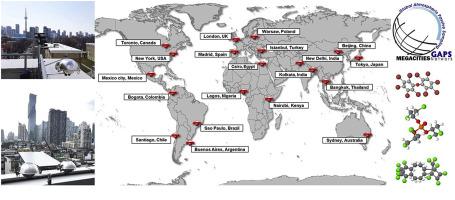Environmental Pollution ( IF 7.6 ) Pub Date : 2020-09-08 , DOI: 10.1016/j.envpol.2020.115616 Yuhui Liu , Ting Gao , Yafei Xia , Zhengrong Wang , Chengshuai Liu , Shehong Li , Qiqi Wu , Meng Qi , Yiwen Lv

|
Paddy soils around mining areas suffer from the great threat of heavy metal pollutions. The traditional source-tracing methods based on metal concentrations limit our ability to quantify the sources of heavy metals and trace their transport processes to paddy soils. In this study, Zn isotope compositions of paddy soils in Dabaoshan mine area, a typical sulfide deposit in southern China, have been systematically studied. According to a plot between 1/Zn (i.e. inverse concentration) and δ66Zn value, all the polluted paddy soils fall on the mixing line between acid mine drainage precipitate (AMD-precipitate) and fertilizer while the unpolluted paddy soil falls on the mixing line between fertilizer and bedrock. This indicates the mixing of Zn sources at least three end-members: the mining end-member (i.e. AMD-precipitate), the agricultural end-member (i.e. fertilizer), and bedrock whose geochemical signature is often overprinted by the former two sources around the mining area. The quantitative calculations to apportion the end-member’s contributions show that the mining activity contributes most Zn in the paddy soils with an average of ∼66.2%. The contribution of mining activities has significant spatial variations. Specifically, the mining activities have relatively low impacts on the lower reach and the deep soil. Additionally, the apparent Zn isotope fractionation between AMD and AMD-precipitate (Δ66ZnAMD-precipitate - AMD of -0.35 to -0.08‰) in the tailings dam suggests that Zn cations in AMD coprecipitated with the secondary Fe-bearing minerals (e.g. jarosite and goethite). After being discharged from the tailings dam, Zn is mainly carried by the Fe-oxide minerals and migrated during surface runoff. Our study highlights the contribution of human activities to the Zn pollution in the paddy soils and the key role of Fe-bearing minerals in the migration of Zn. These findings provide a scientific base for the development of policy for pollution control in mining-affected region.











































 京公网安备 11010802027423号
京公网安备 11010802027423号